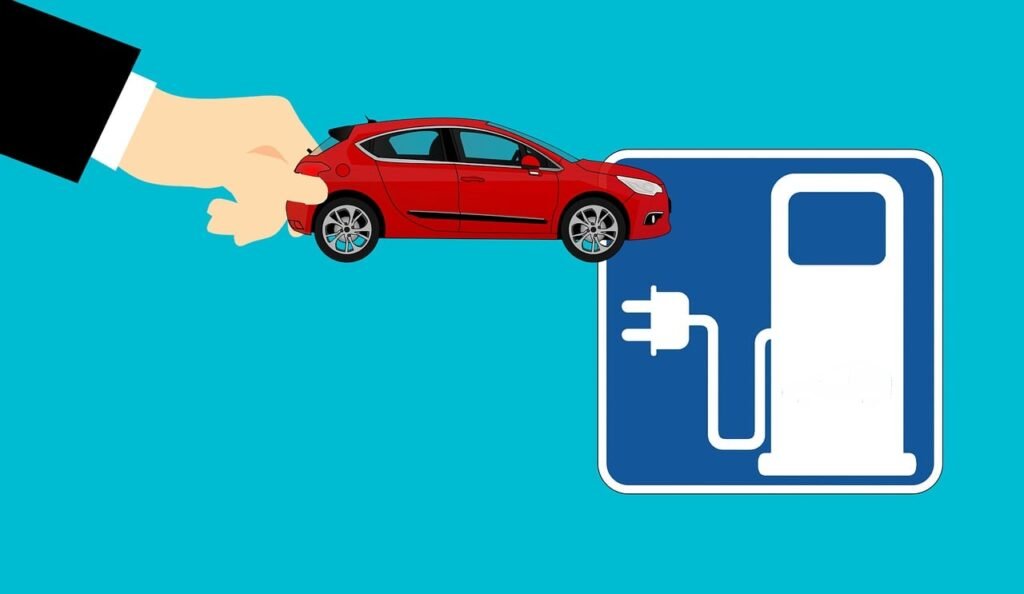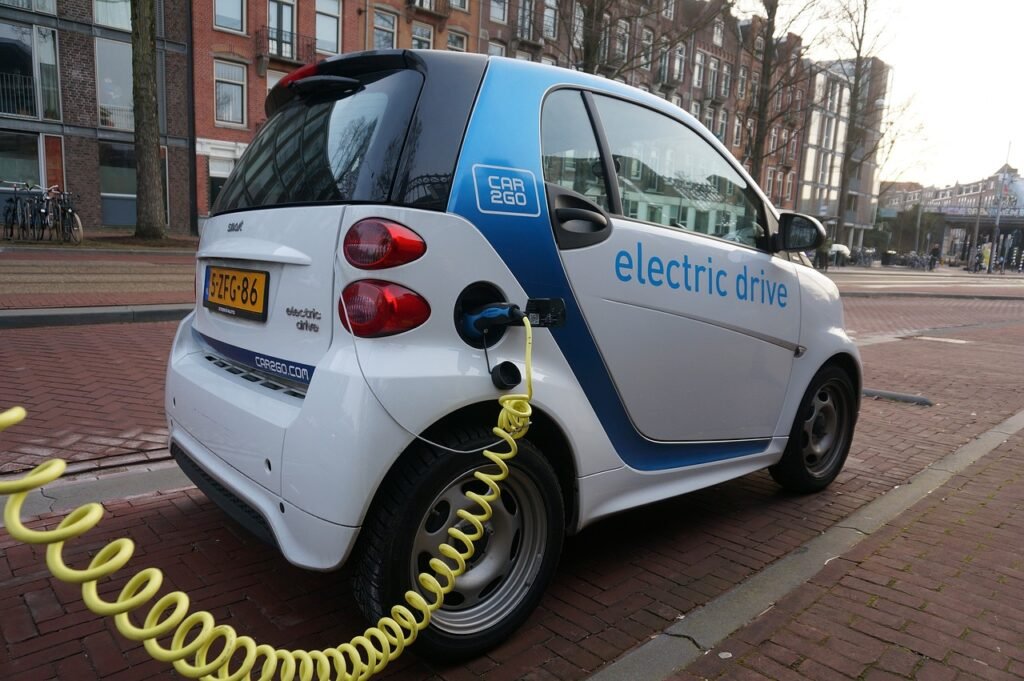Traveling in rural areas can pose unique challenges for electric vehicle owners when it comes to finding charging stations. In this article, you will learn about the creative solutions that electric vehicle owners have come up with to handle charging while on the road in rural areas. From planning ahead to utilizing alternative charging options, you will discover how these innovative individuals navigate the charge to keep their electric vehicles running smoothly on the open road. How Do Electric Vehicle Owners Handle Charging While Traveling In Rural Areas?
Have you ever wondered how electric vehicle (EV) owners manage charging their cars while traveling through rural areas? If you’ve considered making the switch to an EV but are unsure about how you’ll charge your vehicle on long road trips or in remote locations, you’re not alone. Many EV owners face challenges when it comes to finding charging stations outside of urban areas. In this article, we’ll explore how EV owners handle charging while traveling in rural areas and provide you with tips and strategies to make your road trips more convenient and enjoyable.

This image is property of pixabay.com.
The Challenge of Charging in Rural Areas
Charging an electric vehicle can be a challenging task, especially in rural areas where charging infrastructure may be limited or non-existent. Unlike gasoline-powered vehicles, which can easily be refueled at gas stations scattered across the country, EVs rely on charging stations that are still in the process of being built out. This lack of infrastructure can make it difficult for EV owners to find reliable charging options while on the road.
One of the main concerns for EV owners traveling through rural areas is “range anxiety” – the fear of running out of battery charge before reaching a charging station. This fear can be exacerbated in areas with few charging stations, as the nearest one may be too far away to reach on the remaining charge.
Planning Your Route in Advance
To alleviate range anxiety and ensure you have a smooth road trip in your EV, it’s essential to plan your route in advance. Before embarking on your journey through rural areas, take the time to research the locations of charging stations along your route. Websites and apps like PlugShare, ChargePoint, and Tesla’s Supercharger map can help you locate charging stations and plan your stops accordingly.
When planning your route, consider factors such as the distance between charging stations, the speed of the chargers available, and any potential detours or delays you may encounter. It’s also a good idea to have a backup plan in case a particular charging station is out of service or occupied when you arrive.
Charging Strategies for Rural Areas
In rural areas where charging stations may be few and far between, EV owners need to get creative and strategic when it comes to charging their vehicles. Here are some charging strategies to help you navigate rural areas and ensure you have the power you need to reach your destination:
Overnight Charging at Accommodations
One of the most convenient ways to charge your EV while traveling through rural areas is to take advantage of charging options at accommodations such as hotels, resorts, and bed and breakfasts. Many lodging facilities now offer EV charging stations for guests, allowing you to charge your vehicle overnight while you rest and recharge yourself.
Before booking your accommodations, be sure to inquire about EV charging options and reserve a spot if necessary. Some establishments may offer complimentary charging for guests, while others may charge a fee for the service. Either way, taking advantage of overnight charging at accommodations can help you start each day of your road trip with a full battery.
Destination Charging
Another effective charging strategy for rural areas is to seek out destination charging locations such as shopping centers, restaurants, and tourist attractions. These types of establishments often provide EV charging stations for customers and visitors, giving you the opportunity to top up your battery while you enjoy your time at the destination.
When planning your itinerary, look for destinations that offer charging options and schedule your stops accordingly. Shopping centers with charging stations can be great places to fuel up your vehicle while you shop for necessities or grab a bite to eat. By incorporating destination charging into your trip, you can make the most of your time in rural areas and keep your EV powered up along the way.
Portable Chargers and Power Banks
In remote locations where public charging stations are scarce, portable chargers and power banks can be lifesavers for EV owners. These portable charging devices allow you to plug into a standard power outlet and give your vehicle a boost when you’re far from a dedicated charging station.
Portable chargers come in various sizes and capacities, so be sure to choose one that is compatible with your EV and can provide an adequate amount of charge. Keep your portable charger on hand during your road trip, and use it as a backup option in case you find yourself unexpectedly low on battery power in a rural area.

This image is property of pixabay.com.
Making the Most of Public Charging Stations
While rural areas may have fewer charging stations than urban areas, public charging options are still available and can be valuable resources for EV owners on the go. Here are some tips for making the most of public charging stations in rural areas:
Fast Charging vs. Level 2 Charging
When using public charging stations in rural areas, it’s important to understand the difference between fast charging (DC fast charging) and Level 2 charging (AC charging). Fast chargers can provide a significant amount of power in a short amount of time, allowing you to recharge your EV quickly and get back on the road.
However, not all public charging stations offer fast charging, especially in rural areas where infrastructure may be limited. In these cases, you may need to rely on Level 2 charging, which provides a slower charge but is more widely available. Plan your stops accordingly and choose stations that offer the type of charging you need to keep your journey on track.
Charging Etiquette and Station Availability
When using public charging stations in rural areas, it’s essential to practice good charging etiquette and be mindful of station availability. Avoid leaving your EV plugged in longer than necessary once your vehicle is fully charged, and be considerate of other EV owners who may be waiting to use the station.
Additionally, check the availability of charging stations in advance and have a backup plan in case your preferred station is occupied or out of service. Apps like PlugShare and ChargePoint can help you see real-time station status and availability, allowing you to plan your stops more effectively.
Charging Costs and Payment Options
While many public charging stations offer complimentary charging or are included with the cost of parking, some stations may require payment for their services. Be sure to familiarize yourself with the charging costs and payment options at each station you plan to visit, and have payment methods such as credit cards or mobile apps ready for use.
Keep in mind that charging costs can vary depending on the station operator, location, and type of charging offered. Some stations may charge a flat fee for each session, while others may charge by the hour or kilowatt-hour. Understanding the charging costs in advance can help you budget for charging expenses and avoid any surprises during your road trip.

This image is property of pixabay.com.
Conclusion
Traveling through rural areas in an electric vehicle can present unique challenges for EV owners, but with proper planning and charging strategies, you can navigate these obstacles and enjoy a seamless road trip. By researching charging locations, taking advantage of overnight and destination charging options, and utilizing portable chargers when needed, you can ensure that your EV stays powered up and ready to go wherever your travels take you.
Remember to practice good charging etiquette, be mindful of station availability, and familiarize yourself with charging costs and payment options to make the most of public charging stations in rural areas. With the right approach and a bit of flexibility, you can successfully handle charging your electric vehicle while traveling through rural areas and experience all the benefits of driving an EV on the open road. Happy charging!


